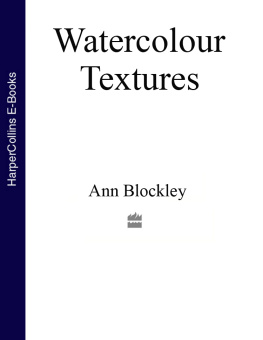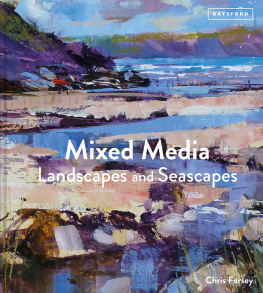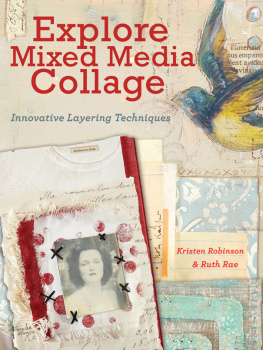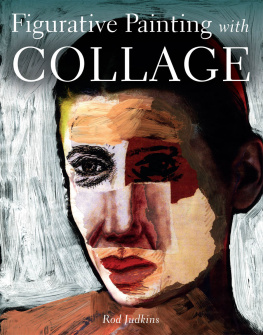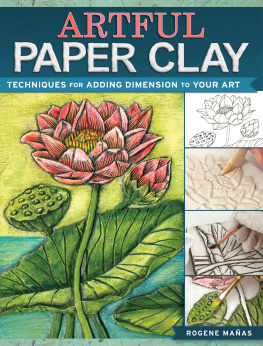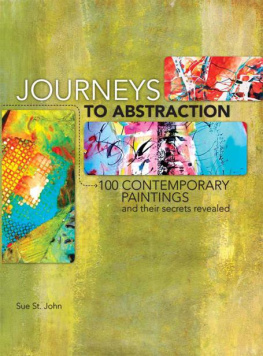Collage, Colour and Texture in Painting

Umbrian Landscape
Mixed media on mountboard 58 x 76 cm (23 x 30 in)

Village Shop, Cinque Terre
Mixed media on mountboard 42 x 35 cm (16 x 14 in)
Collage, Colour and Texture in Painting
Mike Bernard and Robin Capon

Acknowledgements
My sincere thanks to Robin Capon, for his insight and dedication in rendering my thoughts and ideas into a highly professional and concise text. My thanks, also, to photographers Michel Focard and John Andow, who have served me so efficiently in providing the majority of images for the book. Additionally, I should like to thank the many galleries that have shown my paintings and given me such great support, and especially everyone who has bought my work and so inspired me to carry on being creative.
Mike Bernard
www.mikebernard.co.uk
www.visitnutcombe.com
Contents
Introduction
From my experience when I used to teach, as well as from my own perception as an artist, I know that one of the most difficult aspects of painting is finding the most suitable and original way of expressing oneself. Each artist has a different view of the world and this should be reflected in a style of work that is distinctive and personal.

Mike Bernard in his studio.
We all start by learning certain techniques and aiming to paint exactly what we see in the subject matter before us. And this is fair enough, because there is no substitute for developing the basic skills in drawing and painting, and consequently acquiring a degree of confidence. But how do we progress further and add that spark of individuality that takes our work beyond the ordinary and makes it stand out from the crowd?
Essentially, the form and impact of our work is influenced by two factors: our painting philosophy (what we regard as the important qualities to achieve in a painting), and practical issues (the materials and techniques that we choose to use). Having learned to paint in a conventional manner, many artists find it difficult to break away from that approach. But, in my experience, there comes a time when you have to reappraise both philosophy and technique in order to find a painting process that allows scope for personal expression and offers a good balance of challenges and rewards.
From the time I was at art college I have always felt that, rather than aiming to make an image that was completely faithful to the original scene, sketch or inspiration, it was more important to create an interesting painting. By this, I mean that the completed picture should be exciting to look at and have an overall coherence and impact. This does not necessarily preclude it from evoking a particular sense of place, of course, but it will show this with an emphasis on personal interpretation and will have been influenced by things that have happened during the painting process.
Creating your own interpretation of the subject matter and so overcoming the belief that you must always produce a likeness of it is something that I encourage throughout this book. It is a practice that is fundamental to painting, I believe, because surely the reason for painting is to express what you think and feel about things. And, as I have implied, this is inherently linked to the materials and techniques that you use.
When I was a student, dissatisfied with the lack of originality and impact in my paintings, I found that the solution was to set certain limits within which to work. Essentially, the limits were defined by the materials and processes that I allowed myself to use and, in turn, they created challenges and encouraged more intuitive, expressive paintings. In my view, uncomplicated paintings are generally the most successful: they have more vitality and, because they do not state everything in absolute detail, there is room for viewers to use their imagination. For many years now I have worked with a very limited palette of colours, using a combination of paint and collage techniques, and this has led to much more enjoyable and successful results. It is an approach that helps you to work with greater freedom of expression, and one that I can thoroughly recommend.
The way that you start a painting can have a tremendous influence on its ultimate success or failure. A common tendency is to do too much preparation, or start with too fixed an objective. Often, the blank white paper or canvas surface is another inhibiting factor. As discussed and demonstrated in the following sections of this book, I like to begin in a fairly spontaneous way, perhaps with random, abstract shapes of colour and texture. This has a very liberating effect and encourages me to continue to work freely, while respecting the demands of the painting itself. And, although I will have a particular place or scene in mind, I never allow that to dominate the painting process. What I strive for, and equally what I hope will inspire and help you in your work, is an approach that allows me to be true to myself and to paint with feeling and confidence.

Fishing Boats, Pittenweem
Mixed media on MDF 71 x 71 cm (28 x 28 in)
Uncomplicated paintings are generally the most successful. I usually work with quite a limited range of paint and collage techniques.

Evening, Piccadilly Circus
Mixed media on mountboard 38 x 53.5 cm (15 x 21 in)
Rather than aiming to create an exact likeness of the subject matter, I think it is more important that the painting itself is interesting and shows a personal interpretation.
1 Starting Points
The starting point for all art is inspiration: this is a vital factor in creating work that has conviction, feeling and impact. For me, the ideas for paintings come from my surroundings, and especially from harbours and coastal scenes. Perhaps this is influenced by the fact that I grew up near Dover in Kent, but I have always been attracted to the colours, shapes, light and atmosphere of the coast. In particular I like subjects in which there is an interaction, pattern or repetition of shapes rooftops, windows, boats, sails, masts and so on. Invariably, it is this aspect of a subject, combined with the overall sense of place and the experience gained from being there, that inspires me to paint it.
is a good example of the type of subject matter that I find exciting and challenging. It involves man-made, almost abstract shapes which, in their repetition, create a sense of unity and coherence in the composition. At the same time, with its contrasts of scale and colour, the pattern of shapes adds variety and interest. Note how I have exploited the boat, mast, tyre and house shapes as compositional elements. I never feel limited by what is actually there: once I have been inspired by a subject I am prepared to embellish and interpret it as required, depending on the needs of the painting. I sometimes add more shapes, or leave things out. The strength and impact of the composition is the most important factor, rather than a feeling that I must adopt a totally representational approach.
Next page

